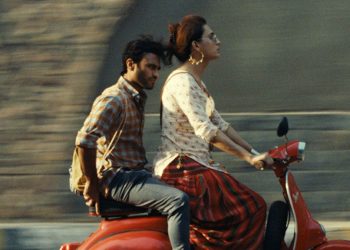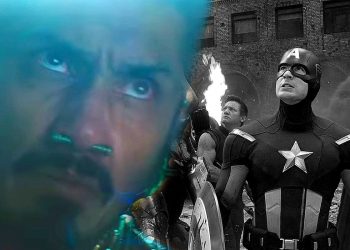Audrey Diwan’s “Happening.”
Which is also a very different kind of film. I saw that one only after making this film. But I had seen a lot of films on the subject before I went into this and knew that we had an opportunity to do something that hadn’t been done, and to approach the topic in a way that did not focus on trauma, or did not focus on the exceptionalism of abortion, but rather on the normalized medical healthcare procedure that it is, with warmth, and with humor and all the things that happen in life when we undergo, let’s say, traumatic or trying or difficult events.
I thought the sequence where Joy goes before the hospital board pleading the need for an abortion as a medical case was very well done. It’s harrowing in and of itself, because all these men are deciding her medical decisions for her. I’d love to talk about how that scene came about and sort of what you were hoping to achieve with that.
The only thing that wouldn’t have really happened, I think, in that scene is that she may not have been there. It might have just been those guys and her husband. But again, this was ordinary; this happened every day in hospitals across the country. Hospitals would have these boards, and they would decide the fate of women seeking what they called “therapeutic termination.” They rarely granted them and in the case of Joy, if you had a 50% chance of surviving, that was good. That was good enough. It wouldn’t be good enough for me, it wouldn’t be good enough for you, and it certainly wasn’t good enough for the character. But I think that we were attempting to highlight the violence of civility, you know, the violence of a scene like that. It is the most violent scene, I think, in the film in terms of affront to women. I wanted that to come right before the next series of scenes in which she actually does go out and get herself the help that she needs.
I think that sequence is about 10 minutes of the film. I’d love to hear what inspired showing each step like that. We follow her being picked up by the car, her showing up there, her waiting, and then the procedure itself. It almost felt like how Chantal Akerman maybe would have done it, in that she always wanted you to feel the time pass. The more you are sitting with Joy as she goes through this, the more you feel how she feels going through this procedure.
For me, that was very important. I wasn’t thinking of Chantal, but of course, she’s there all the time. That’s a great way to look at it. Yes, to take the audience through not only the procedure, but what it takes to get to the procedure in almost real time. It is putting you there, it is completely, not implicating the audience, but removing the veneer of politeness that I think has been overlaid on, let’s just say, any kind of discussion of women’s bodies and films on the abortion procedure itself.
Source by www.rogerebert.com











